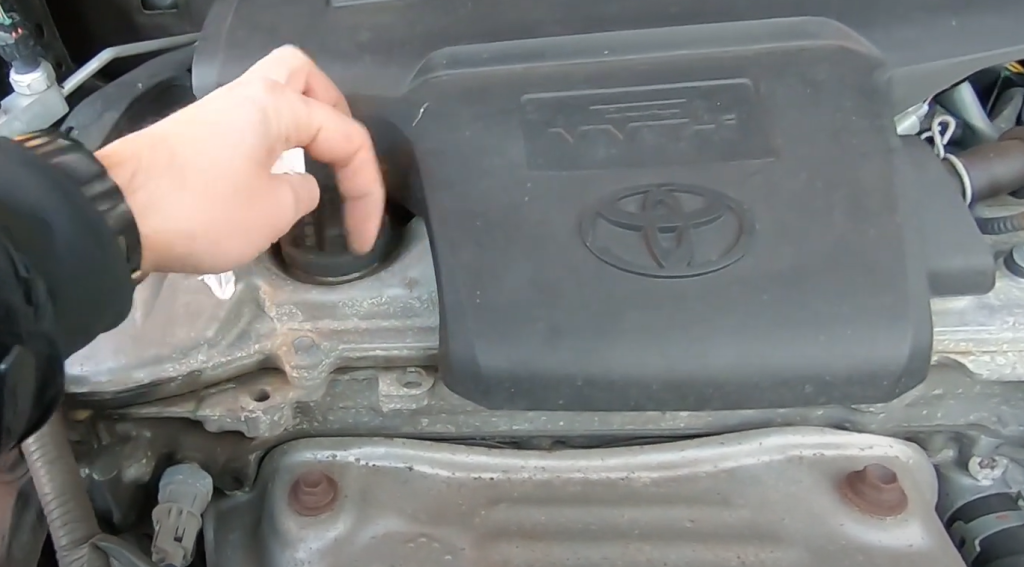Getting a new Toyota RAV4 is exciting, but it’s important to take care of it from the start. The break-in period is a crucial time for your new vehicle. This is when the engine parts settle into place and start working together smoothly.
The Toyota RAV4 break-in period typically lasts for the first 500 to 1000 miles of driving. During this time, you’ll need to follow some specific guidelines to make sure your RAV4’s engine and other components are properly broken in. These steps help ensure your vehicle will perform well for years to come.
Taking care of your RAV4 during the break-in period isn’t hard, but it does require some attention. By following the manufacturer’s recommendations, you can help extend the lifespan of your RAV4’s engine and get the best performance out of your new vehicle.
Key Takeaways
- The RAV4 break-in period lasts 500-1000 miles
- Following guidelines helps ensure long-term performance
- Proper break-in can extend engine life
Understanding Break-In Period
The break-in period for a Toyota RAV4 is a crucial phase when the vehicle is new. It helps ensure optimal performance and longevity of the engine and other components. Proper care during this time can have lasting benefits for your SUV.
Definition and Importance
A break-in period refers to the initial driving time for a new vehicle. For the Toyota RAV4, this typically spans the first 1,000 miles of driving. This phase is essential because it allows various engine parts to settle into place and work together smoothly.
During this time, the engine’s moving parts adjust to each other. Piston rings seat properly against cylinder walls. Bearings and other components align correctly. This process helps reduce friction and wear on crucial engine parts.
A proper break-in can lead to:
- Better fuel efficiency
- Improved engine performance
- Longer engine life
- Reduced oil consumption
Manufacturer Recommendations
Toyota provides specific guidelines for breaking in a new RAV4. These recommendations help protect the engine and ensure its longevity.
Key points include:
- Avoid rapid acceleration
- Keep engine speeds moderate
- Don’t tow heavy loads
- Vary your driving speeds
Toyota also suggests avoiding long periods of idling or full-throttle operation. It’s best to gradually increase engine load over time.
For the first 600 miles, maintain speeds below 85 mph. After 600 miles, you can gradually increase to normal highway speeds. Always follow the specific instructions in your RAV4’s owner’s manual for the most accurate guidance.
Initial Steps During Break-In
The Toyota RAV4 break-in period involves specific guidelines for the first 1000 miles. These initial steps help ensure proper engine performance and long-term durability.
The First 100 Miles
For the first 100 miles, drive your new RAV4 gently. Keep the engine speed below 4000 RPM and avoid hard acceleration. Vary your speed frequently to help seat the engine components properly.
Don’t use cruise control during this time. It’s better to manually control the throttle for smoother acceleration. Avoid sudden stops as well. This allows the brake pads to wear in gradually.
Let the engine warm up for about 30 seconds before driving. Don’t rev it while idling. When parking, let the engine idle for a minute to cool down gradually.
100 to 1000 Mile Guidelines
From 100 to 1000 miles, continue driving conservatively but gradually increase performance. Keep engine speeds moderate, generally below 5000 RPM. Avoid sustained high speeds or full-throttle acceleration.
Do not tow during the first 500 miles. This puts extra stress on the engine and transmission. After 500 miles, you can tow light loads if necessary.
Vary your speed frequently on highways. Short bursts of acceleration followed by coasting help seat piston rings properly. Avoid using cruise control for extended periods.
Continue to avoid hard braking when possible. By 1000 miles, most components will be properly broken in.
Driving Practices for Optimal Break-In

Breaking in a new Toyota RAV4 requires specific driving practices. These techniques help ensure the engine’s longevity and performance. Following these guidelines during the first 1,000 miles is crucial.
Speed Variation
Varying your speed during the break-in period is important. This helps seat the engine components properly. Drive at different speeds between 30 and 55 mph. Change your speed every 5 to 10 minutes.
Avoid constant speeds for long periods. This prevents uneven wear on engine parts. Short trips with speed changes are ideal.
On highways, use cruise control sparingly. Manual speed adjustments are better for breaking in the engine.
Avoiding Hard Stops
Gentle braking is key during the RAV4’s break-in period. Hard stops can damage new brake components. Gradual braking allows the brake pads to wear evenly.
Start slowing down earlier than usual. This gives you more time to stop smoothly. Leave extra space between your RAV4 and other vehicles.
Use engine braking when possible. Downshift to slow down on hills or when approaching stops. This reduces stress on the brake system.
Moderate Acceleration
Gentle acceleration is crucial for proper engine break-in. Avoid rapid starts and sudden bursts of speed. Gradually press the gas pedal when accelerating.
Keep engine RPMs below 4,000 during the first 1,000 miles. This helps piston rings set properly. Shift gears at lower RPMs than you normally would.
Don’t use full throttle during this period. Accelerate to about 3/4 of the RAV4’s capability. This ensures all engine parts wear in evenly.
Maintenance During the Break-In Period
Proper maintenance is key during your Toyota RAV4’s break-in period. Regular checks and timely service help ensure optimal performance and longevity of your new vehicle.
Oil and Fluid Checks
Checking fluids regularly is crucial during the break-in period. Monitor oil levels weekly. Look for any leaks or unusual color changes.
Top up coolant, brake fluid, and windshield washer fluid as needed. Check power steering fluid if applicable.

Keep an eye on transmission fluid levels. The RAV4 may use more oil than usual during this time. This is normal as components settle.
Don’t forget to inspect the engine bay. Look for loose connections or any signs of wear. Report any concerns to your dealer promptly.
First Service Appointment
Schedule your first service appointment around 1,000 miles or as recommended in your owner’s manual. This visit is crucial for your RAV4’s health.
The technician will:
- Change the oil and filter
- Inspect brake pads and rotors
- Check and adjust tire pressure
- Examine all fluid levels
- Perform a multi-point inspection
Ask questions about any concerns you’ve noticed. Discuss your driving habits with the technician. They may offer tailored advice for your RAV4’s care.
Tire Care and Rotation
Proper tire care is essential during the break-in period. Check tire pressure weekly. Maintain the recommended PSI found in your manual or driver’s door jamb.
Look for uneven wear patterns. These can indicate alignment issues. Address them promptly to prevent further problems.
Rotate tires at the first service or around 5,000 miles. This promotes even wear and extends tire life.
Avoid harsh driving conditions if possible. Extreme temperatures and rough roads can stress new tires.
Remember, proper tire care impacts fuel efficiency and overall vehicle performance.
Long-Term Benefits and Tips
Taking care of your Toyota RAV4 during its break-in period sets the foundation for its future performance and durability. Proper care leads to better fuel efficiency, smoother operation, and fewer repairs down the road.
Extended Vehicle Lifespan
Following the RAV4’s break-in guidelines can significantly extend its lifespan. Gentle driving during this period helps engine parts settle properly, reducing wear and tear. This can lead to fewer repairs and lower maintenance costs over time.
Regular oil changes are crucial during and after the break-in period. Clean oil keeps engine parts well-lubricated, minimizing friction and heat buildup. This helps prevent premature wear on critical components.
Adhering to the recommended maintenance schedule is also important. This includes timely tire rotations, brake inspections, and fluid checks. These routine tasks help catch potential issues early, preventing costly repairs later on.
Future Performance Optimization
Proper break-in procedures can optimize the RAV4’s long-term performance. By allowing engine components to seat correctly, drivers can expect better fuel efficiency and smoother operation throughout the vehicle’s life.
Avoiding sudden accelerations and hard braking during the break-in period helps the engine and transmission work more efficiently. This can result in improved power delivery and responsiveness in the long run.
Maintaining steady speeds and varying RPMs during the initial miles helps distribute oil evenly. This ensures all engine parts are properly lubricated, leading to more consistent performance over time.
Regular tune-ups and following manufacturer recommendations for fluid types and grades can further enhance the RAV4’s performance. These practices help maintain optimal engine function and fuel economy for years to come.
Frequently Asked Questions
New Toyota RAV4 owners often have questions about the break-in period. Let’s address some common concerns about proper vehicle care during the initial driving phase.
What is the recommended break-in period for a new Toyota RAV4?
The break-in period for a Toyota RAV4 typically lasts for the first 1,000 miles (1,600 kilometers) of driving. During this time, drivers should avoid sudden stops and aggressive acceleration.
It’s important to follow the manufacturer’s guidelines to ensure optimal engine performance and longevity.
Are there any specific break-in procedures for a Toyota RAV4 Hybrid?
The break-in procedures for a Toyota RAV4 Hybrid are similar to those of the standard RAV4. Drivers should avoid towing for the first 500 miles (800 kilometers) and maintain moderate speeds.
Gentle acceleration and braking help the hybrid system components settle in properly.
How does the break-in period for a Toyota RAV4 differ from a Toyota Tundra?
The break-in period for a Toyota RAV4 is generally shorter than that of a Toyota Tundra. The RAV4’s lighter weight and smaller engine require less time to settle in compared to the Tundra’s larger truck components.
Tundra owners may need to follow break-in guidelines for a longer period, especially if they plan to use the vehicle for heavy towing.
What are the guidelines for oil changes during the break-in period of a Toyota vehicle?
Toyota recommends the first oil change for a new RAV4 at 5,000 miles (8,000 kilometers) or 6 months, whichever comes first. This applies to both standard and hybrid models.
Regular oil changes help remove any metal particles that may have come loose during the break-in period.
How long should the break-in period last for a new Toyota vehicle?
The break-in period for most Toyota vehicles, including the RAV4, lasts for about 1,000 miles (1,600 kilometers). Some models may have specific guidelines that extend this period.
Drivers should consult their owner’s manual for exact recommendations tailored to their vehicle model.
Are there any model years of the Toyota RAV4 that should be avoided due to issues?
While the Toyota RAV4 is generally reliable, some model years have had reported issues. The 2019 model year experienced some transmission problems in early production units.
Buyers should research specific model years and consult consumer reports before purchasing a used RAV4.


